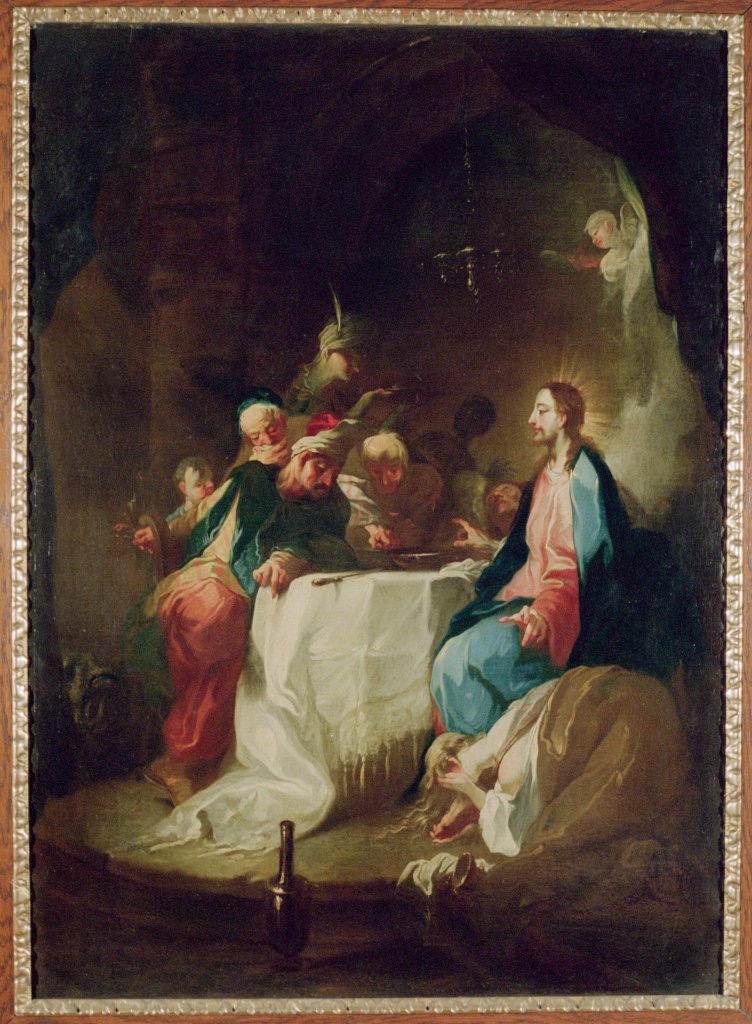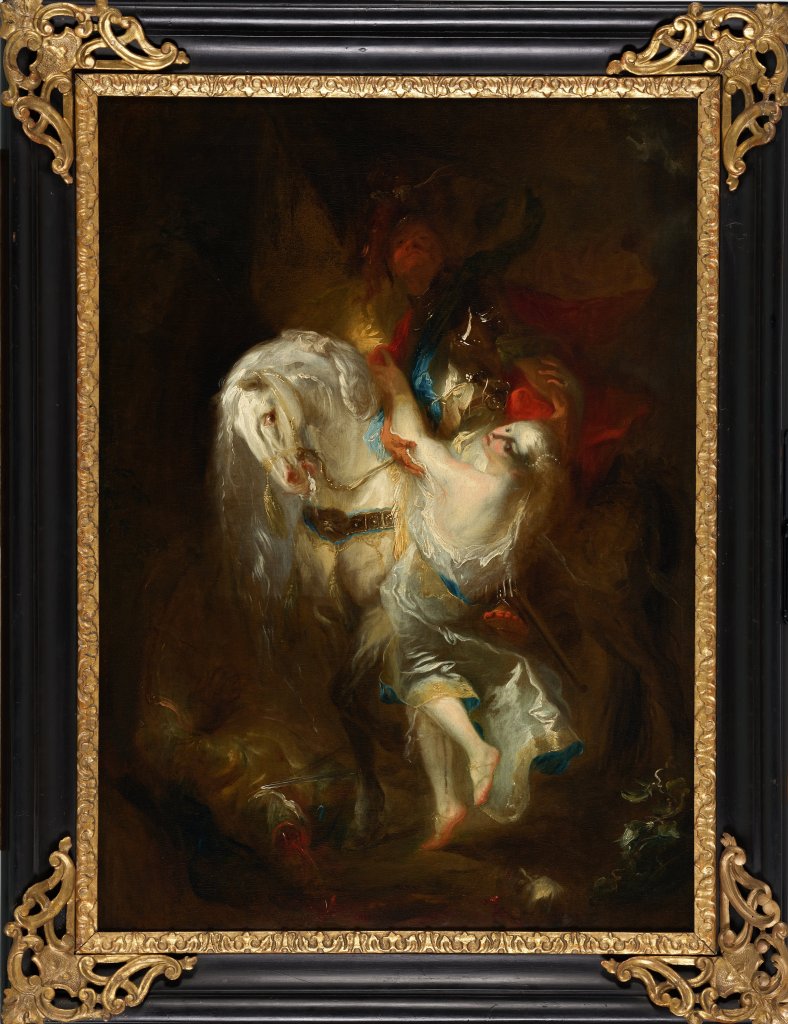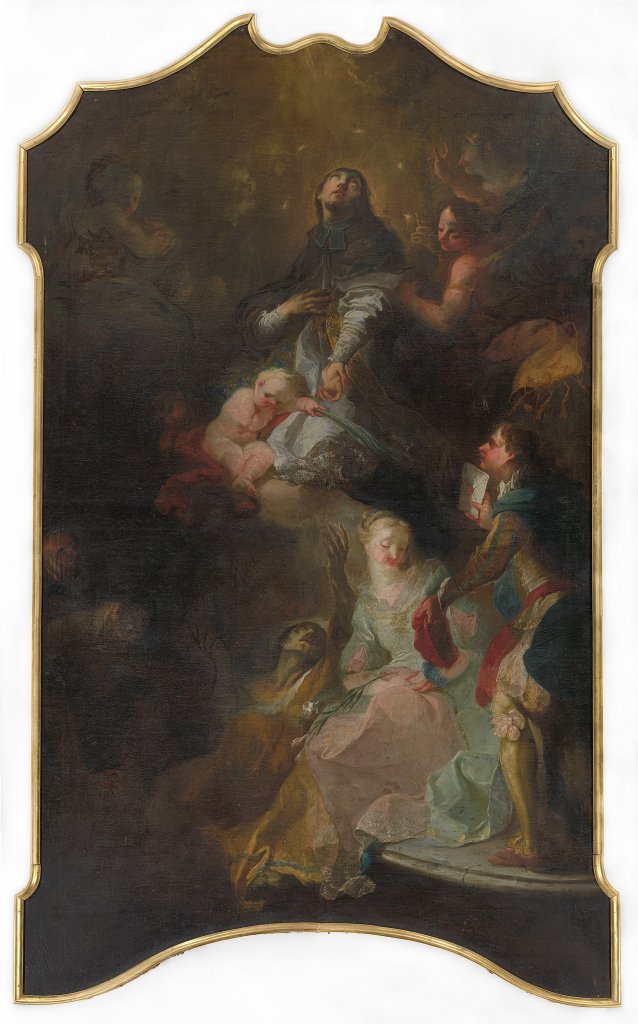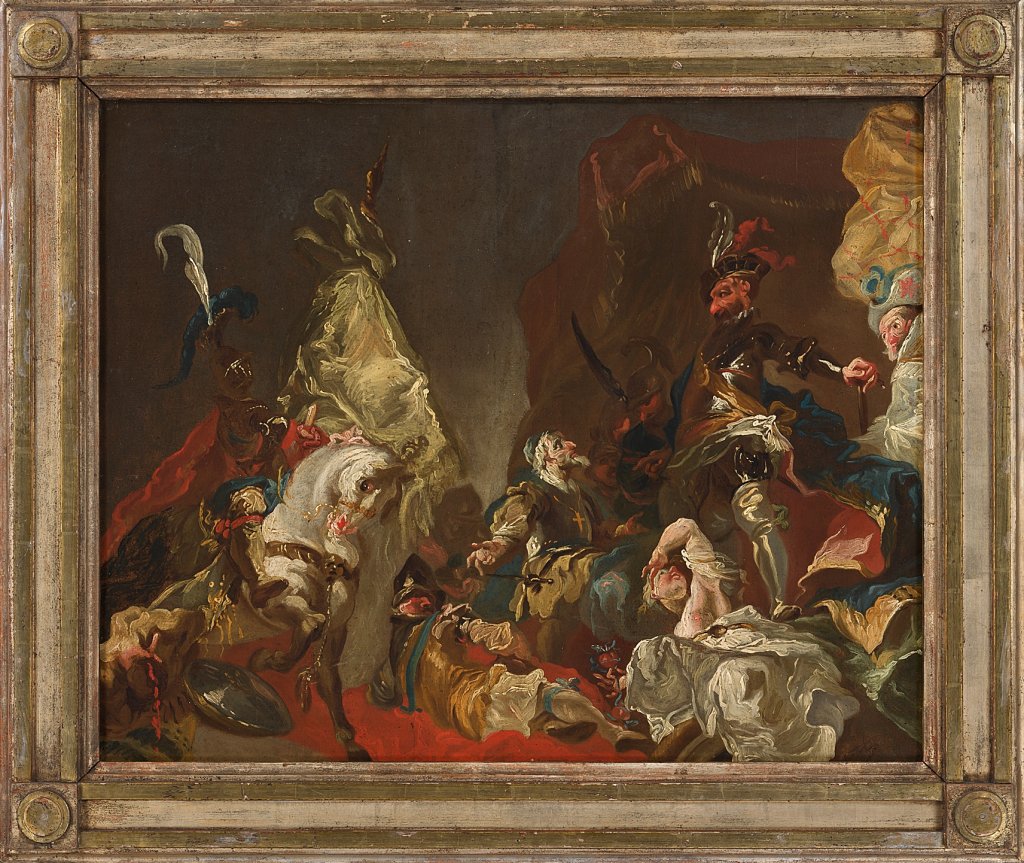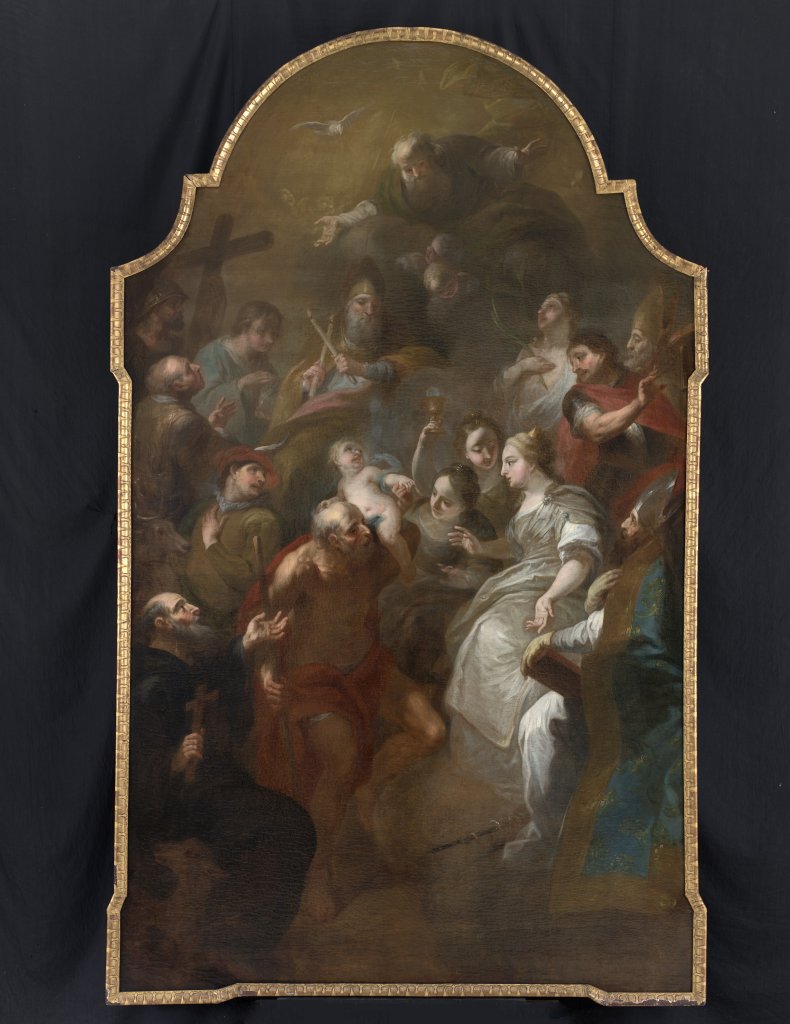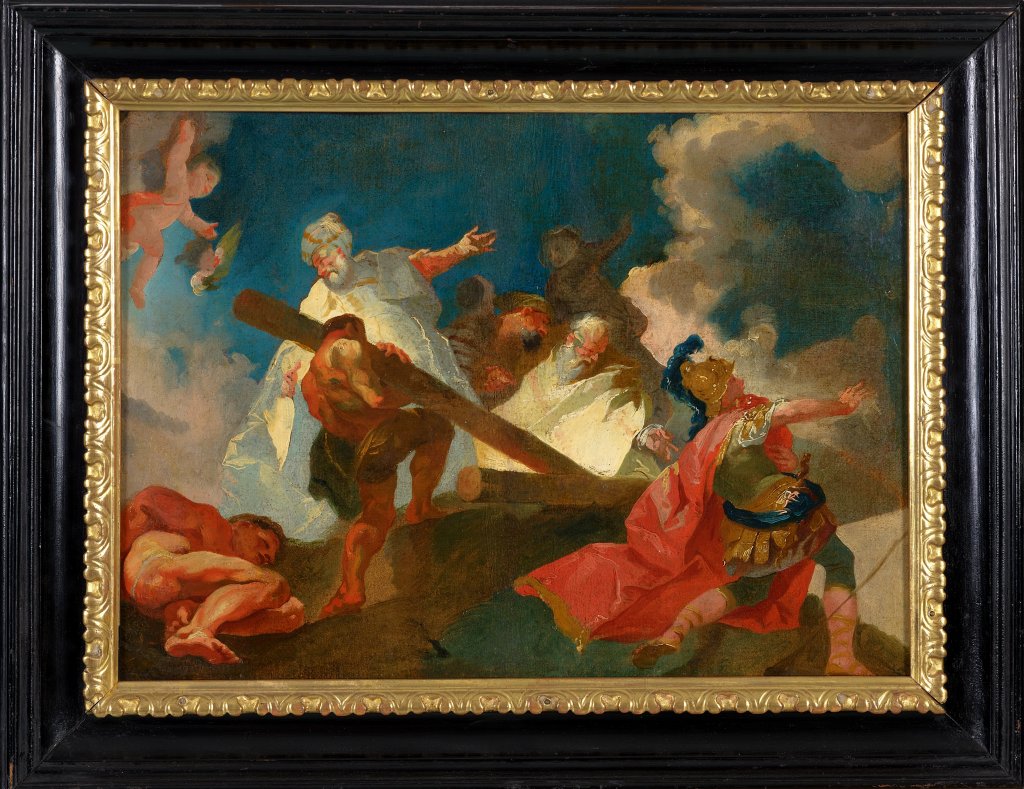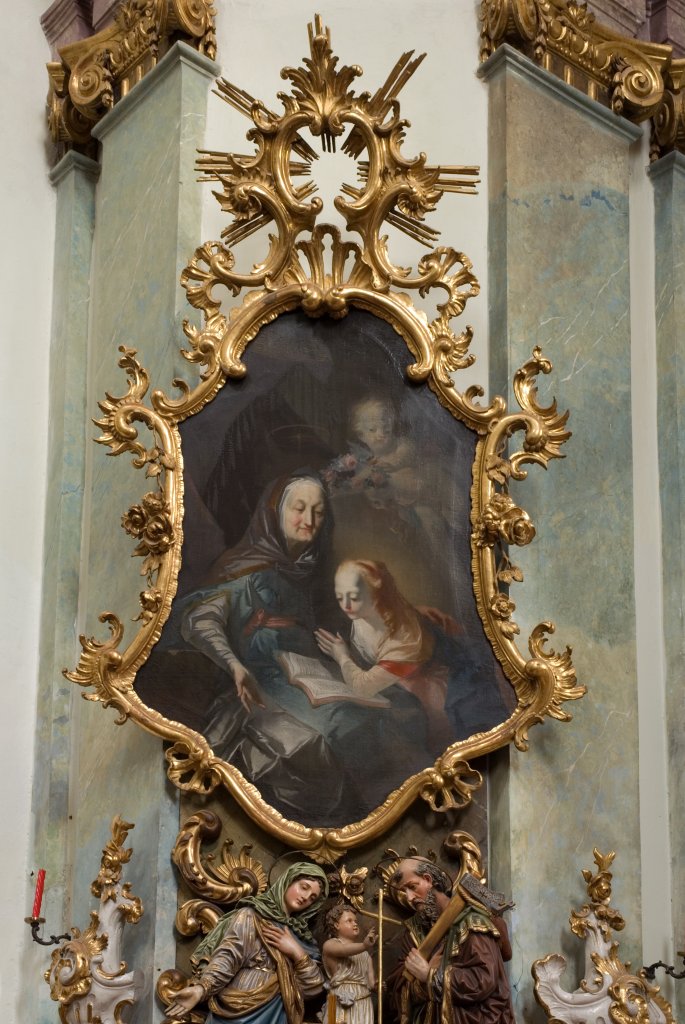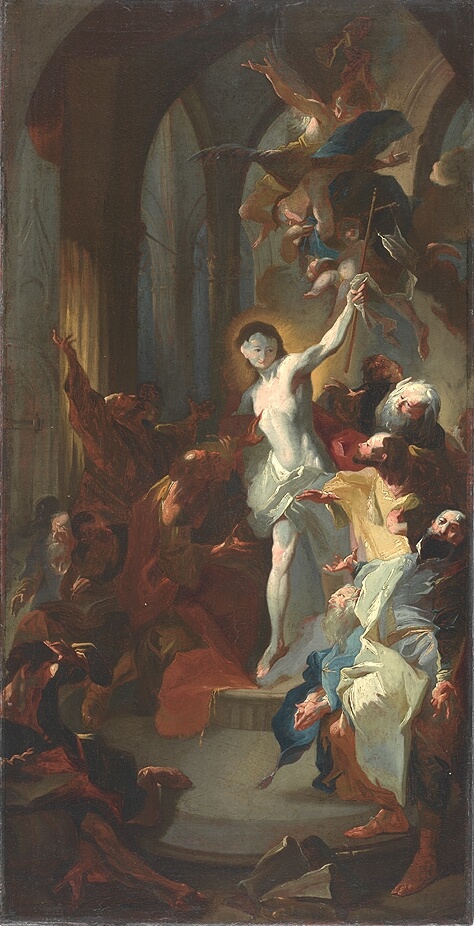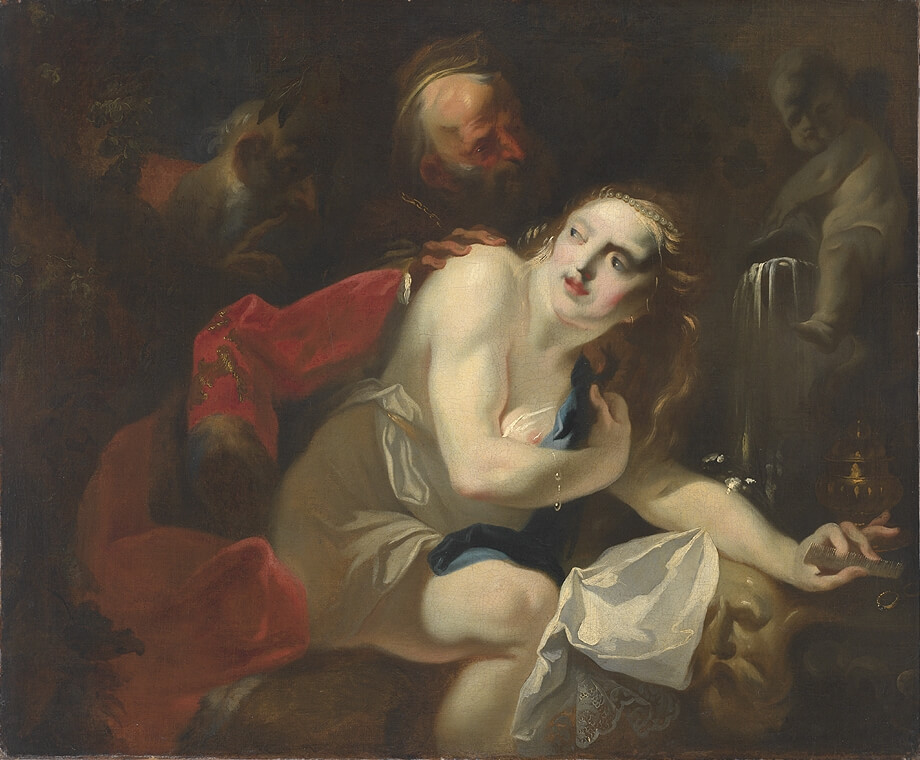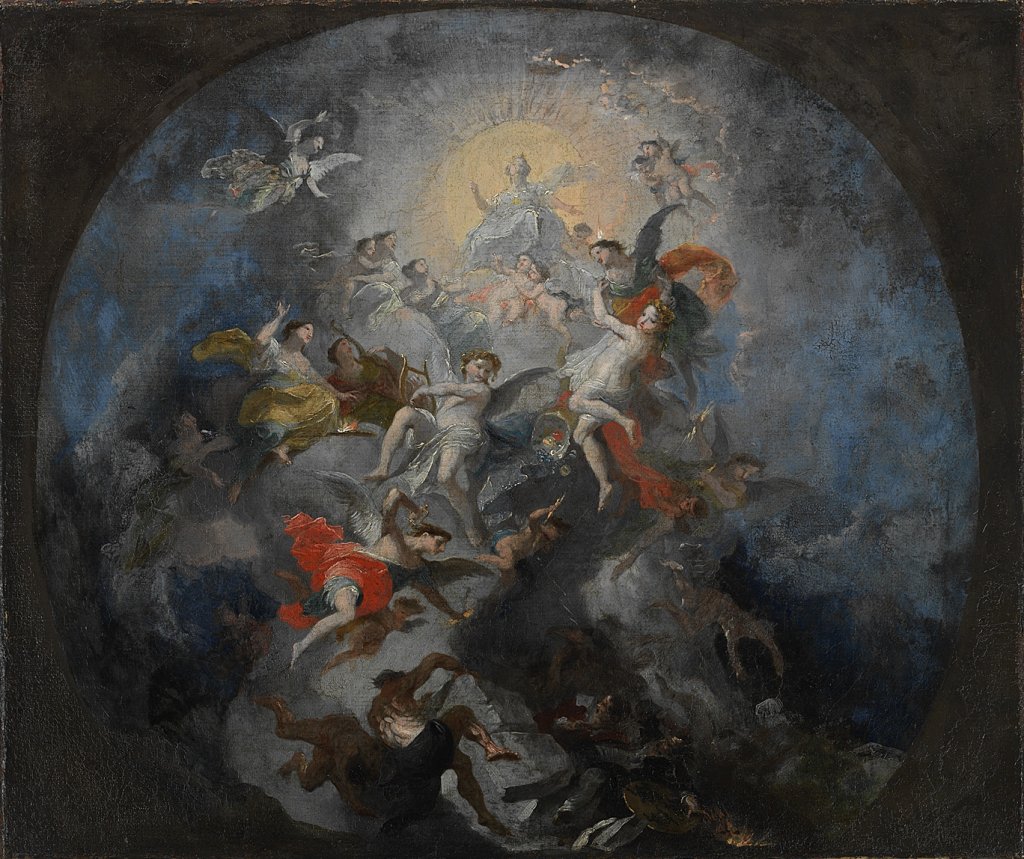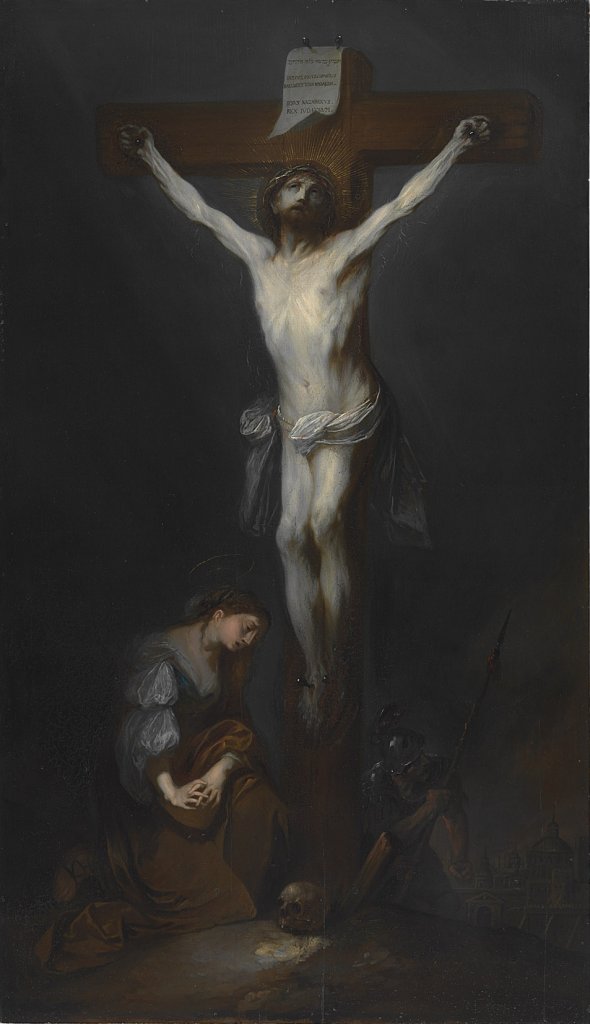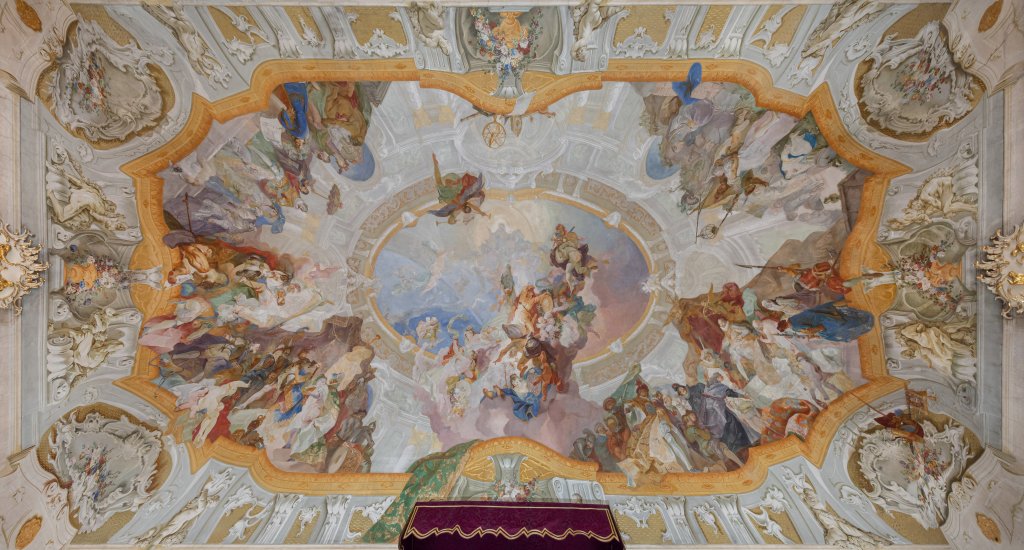Maulbertsch pinxit. Commissions of Franz Anton Maulbertsch in Moravia and Bohemia

Franz Anton Maulbertsch is one of the most outstanding representatives of Central European painting of the late Baroque period. He came from Lake Constance, from the late 1830s he was permanently settled in Vienna and in the second half of the 18th century he significantly influenced the painting scene in Moravia and Bohemia. His name can now be linked to a number of important murals and altarpieces in the interiors of local churches. An unmissable epilogue and one of the commissions with which he introduced himself in Bohemia was the painting of the Philosophical Hall of the library of the Premonstratensian monastery in Prague at Strahov, where, at the request of the client, he followed up on a similar task he had presented two decades earlier in the library of the Premonstratensian monastery in Louka near Znojmo.
At the height of his career, Maulbertsch accepted commissions from various parts of the Habsburg monarchy and beyond. His considerable workload therefore soon led him to establish an efficient studio, which over the course of four decades saw the succession of several prominent, otherwise independently active painters. Maulbertsch himself usually concentrated on mural painting, its compositional layout and figurative component. He often commissioned his colleagues to produce altarpieces, either covered by the running of the workshop or invited specifically for a particular commission. In both cases, these artists then executed the commissioned altarpieces in the so-called Maulbertsch manner, although they presented a personal, often visually different pictorial expression in their individual works. Maulbertsch’s role in these cases was limited to the preparation of an oil sketch, submitted to the commissioning artist for approval and then provided as a more or less binding basis to the painter to whom Maulbertsch entrusted the work on the painting.
The exhibition will therefore present in chronological order not only a selection of Maubertsch’s extensive works produced in Moravia and Bohemia, but also a closer look at the workshop itself. In particular, through the works of Maulbertsch’s Viennese colleague and peer Felix Ivo Leicher (1726-1812), who stood outside the workshop operation, and also the almost a generation younger Josef Winterhalder Jr. (1743-1807), Maulbertsch’s former pupil, follower and repeated collaborator, who was especially active in the early years of his career within the workshop operation. Echoes of Maulbertsch’s distinctive style are represented by several other works, often difficult to grasp in terms of authorship.
At the height of his career, Maulbertsch accepted commissions from various parts of the Habsburg monarchy and beyond. His considerable workload therefore soon led him to establish an efficient studio, which over the course of four decades saw the succession of several prominent, otherwise independently active painters. Maulbertsch himself usually concentrated on mural painting, its compositional layout and figurative component. He often commissioned his colleagues to produce altarpieces, either covered by the running of the workshop or invited specifically for a particular commission. In both cases, these artists then executed the commissioned altarpieces in the so-called Maulbertsch manner, although they presented a personal, often visually different pictorial expression in their individual works. Maulbertsch’s role in these cases was limited to the preparation of an oil sketch, submitted to the commissioning artist for approval and then provided as a more or less binding basis to the painter to whom Maulbertsch entrusted the work on the painting.
The exhibition will therefore present in chronological order not only a selection of Maubertsch’s extensive works produced in Moravia and Bohemia, but also a closer look at the workshop itself. In particular, through the works of Maulbertsch’s Viennese colleague and peer Felix Ivo Leicher (1726-1812), who stood outside the workshop operation, and also the almost a generation younger Josef Winterhalder Jr. (1743-1807), Maulbertsch’s former pupil, follower and repeated collaborator, who was especially active in the early years of his career within the workshop operation. Echoes of Maulbertsch’s distinctive style are represented by several other works, often difficult to grasp in terms of authorship.
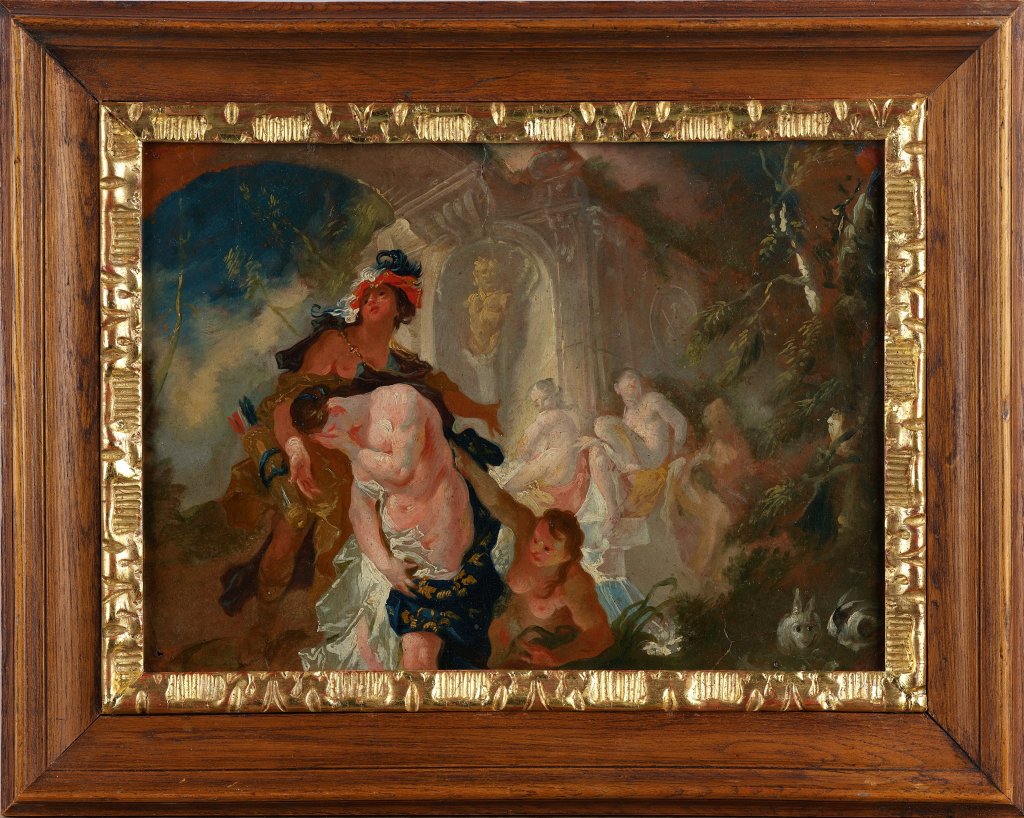

The premises of Kroměříž Castle were not chosen for the exhibition randomly. In 1759, Maulbertsch commissioned the bishop of Olomouc, Leopold Bedřich of Egkhu, to paint the Liege Hall, which would become a natural part of the exhibition. Other murals and uniformly conceived church interiors executed by Maulbertsch’s workshop in Moravia and Bohemia will be highlighted directly in the exhibition by digital presentations. A richly illustrated catalogue will be published in cooperation with the Seminar of Art History of Masaryk University.
Maulbertsch pinxit. Commissions of Franz Anton Maulbertsch in Moravia and Bohemia
- TERM: 31 05 – 29 09 2024
- PLACE: Arcibiskupský zámek Kroměříž, Galerie
- AUTHORS: Petr Arijčuk, Marek Pučalík
- CURATOR: Helena Zápalková
- EXPERT CO-OPERATION: Lubomír Slavíček
- CONSERVATORY AND RESTAURANT WORK: Jakub Barna, Šárka a Petr Bergerovi, Jana Mojžíšová, Petra Pavlíčková, Anna Píšťková, Dalibor Sedlák, Roman Ševčík, Jana a Tomáš Záhořovi, Ondřej Žák
- GRAPHIC DESIGN: Vladimír Vaca
- TRANSLATION: Zuzana Henešová
- INSTALLATION: Jakub Barna, Dušan Sapara, Vlastimil Sedláček, Filip Šindelář, Ondřej Žák
- PROPAGATION: Lukáš Horák, Tomáš Kasal
- PHOTOGRAPHY: Markéta Lehečková, Zdeněk Sodoma
- ADMINISTRATIVE AND TECHNICAL SUPPORT: Štěpánka Bieleszová, Lenka Havelková, Josef Tobolka
- CONTRIBUTORS: Benediktinské opatství v Rajhradě, Kanonie premonstrátů v Gerasu, Kanonie premonstrátů v Želivě, Konvent sester alžbětinek Brno, Královská kanonie premonstrátů na Strahově, Moravská galerie v Brně, Muzeum Kroměřížska, Národní galerie v Praze, Národní památkový ústav, Opatství Staré Brno Řádu sv. Augustina, Rytířský řád křížovníků s červenou hvězdou, Římskokatolické farnosti Hrádek u Znojma, Chýnov, sv. Václava v Mikulově, Tábor, Slezské zemské muzeum v Opavě, private lenders
The exhibition is held on the occasion of the 300th anniversary of the painter’s birth. The patronage was taken over by
- Mons. Josef Nuzík, Auxiliary Bishop and Administrator of the Olomouc Archdiocese
- Mons. Pavel Konzbul, Bishop of Brno
- Grand Master and General of the Order of the Knights of the Cross with the Red Star Josef Šedivý O. Cr
